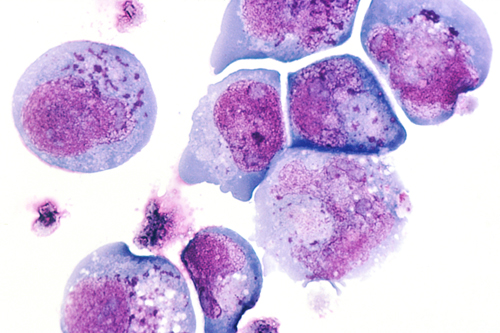 FEBSTAT study suggests that human herpesviruses (HHV)-6B and HHV-7, commonly (roseola virus), account for one third of febrile status epilepticus (FSE) cases. The results of this multi-center study on the consequences of febrile status epilepticus has been published in Epilepsia.
FEBSTAT study suggests that human herpesviruses (HHV)-6B and HHV-7, commonly (roseola virus), account for one third of febrile status epilepticus (FSE) cases. The results of this multi-center study on the consequences of febrile status epilepticus has been published in Epilepsia.
While the incidence of febrile seizures in children under 5 yrs of age is about 5%, 5-8% of these cases are prolonged meeting the criteria for febrile status epilepticus. FSE accounts for 25% of all childhood status epilepticus and 70% of all status epilepticus in the second year of life and is associated with an increased risk of temporal lobe epilepsy (TLE).
The FEBSTAT study looked at 199 children between age 1month – 5 years presenting with FSE and was investigated for herpesvirus infection within 72 hrs of presentation. Polymerase chain reaction (PCR) for HHV-6A, HHV-6B or HHV-7A DNA and RNA along with antibody titers to detect whether the infection was primary or secondary.
Findings indicate that approximately one third of children with FSE had HHV-6 or HHV-7 viremia. HHV-6B viremia was detected in 32% of pediatric participants, with 38 and 16 children having primary and reactivated infection, respectively. 7% of children had HHV-7 viremia at baseline and 2 children had HHV-6/7 primary co-infection. There were no significant differences in age, illness type, fever, seizure structures, or abnormalities in neuroimaging in children with or without evidence of herpes virus infection.
The FEBSTAT study will follow the 199 children involved in the study to determine whether there is an association between prolonged febrile seizures caused by HHV-6B viremia and the development of TLE. Up to 40% of this pediatric population is expected to develop TLE. There is also evidence from previous research by Donati et al. and by Fotheringham et al where they showed HHV-6 in brain samples of patients with TLE.
Temporal Lobe Epilepsy could take upto 8 to 11 years to develop following an episode of FSE and it would take time before the role of HHV-6B is fully known. If the role of HHV-6B in the development of TLE is established, there would a potential for antiviral and anti-inflammatory therapies to prevent the development of TLE.
Citation:
Epstein, L. G., Shinnar, S., Hesdorffer, D. C., Nordli, D. R., Hamidullah, A., Benn, E. K. T., Pellock, J. M., Frank, L. M., Lewis, D. V., Moshe, S. L., Shinnar, R. C., Sun, S. and the FEBSTAT study team (2012), Human herpesvirus 6 and 7 in febrile status epilepticus: The FEBSTAT study. Epilepsia. doi: 10.1111/j.1528-1167.2012.03542.x [abstract]
Read More